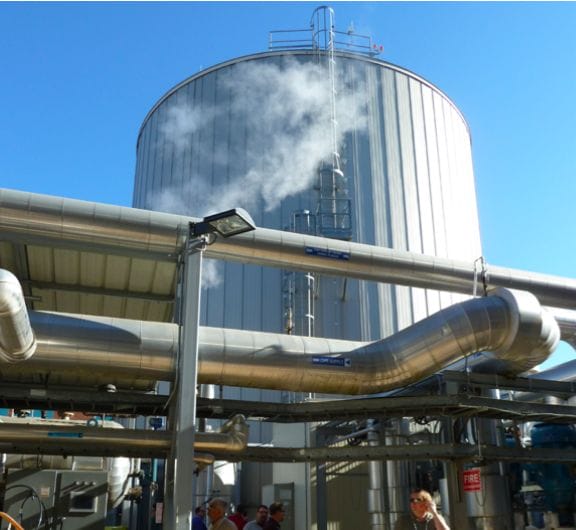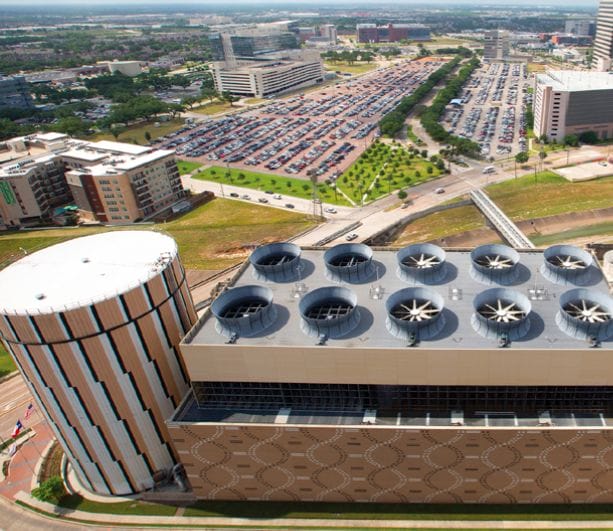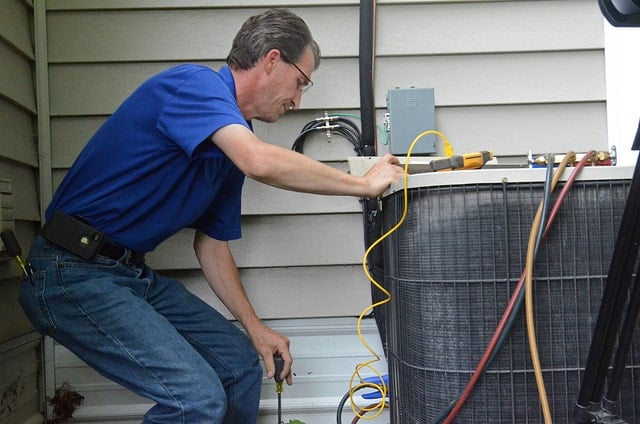With over 2300 members in 26 countries, one thing that makes International District Energy Association unique is how our members are genuinely committed to peer exchange and helping each other learn from experience.
In a 1963 speech, Martin Luther King said, “We are now faced with the fact that tomorrow is today. We are confronted with the fierce urgency of now… This is no time for apathy or complacency. This is a time for vigorous and positive action.” Looking back over nearly 40 years involved in clean energy, I sense that today we are facing a similar moment of inflection about how we plan for and use energy in our cities, communities and campuses. The fierce urgency of now demands our best collective efforts to be the positive force for change to more efficient and sustainable district energy systems. Yesterday’s approach is no longer good enough. Future generations will soon be asking, what were you waiting for?

The International District Energy Association (IDEA) was formed in 1909 and will soon begin our 109th year of continuous operation. With over 2300 members in 26 countries, one thing that makes IDEA unique is how our members are genuinely committed to peer exchange and helping each other learn from experience. We routinely share best practices and new innovations while advancing our common interests in energy efficiency, reliability and sustainability. Surely, there is competition among members and asset consolidation occurring, but IDEA remains, at core, an industry user group of people who own, operate and optimize district energy systems. As a staff, IDEA provides advocacy, education and training through our conferences and tools, and our mission is foster the success of our members in designing, owning and operating efficient district energy, combined heat and power and microgrid systems in cities, communities and campuses. I have been in the district energy industry for over 30 years, and now is the most exciting, interesting and innovative period in our history. District energy is booming.
One of the key challenges facing our both industry and society at large is the rapid urbanization and growing energy density of cities. With over 50% of the global population now living in cities and forecast to grow to over 70% by 2050 (more than 7 billion people), it is vitally important that cities deploy district energy systems to minimize waste and optimize energy and water use. Because district energy systems aggregate the heating, cooling and energy needs of dozens or even hundreds of customer buildings, we achieve economies of scale that facilitate investment in robust, efficient and highly reliable assets that may not otherwise be economically viable or feasible on an individual building basis. District energy systems enhance energy security and resiliency while providing better balance and synergy for integrating clean energy technologies, local thermal resources and the regional grid. Cities represent approximately 2% of global land mass yet account for nearly 70% of global energy use and 50% of global CO2 emissions. It’s like the quote when John Dillinger famously answered why he robs banks, “because that’s where the money is”…. So it is with cities. Cities are where our primary energy and environmental challenges and greatest opportunities lie.

From the initial launch at the landmark 2014 United Nations Climate Summit in New York, IDEA has been a founding supporter of the United Nations Environment Programme (UNEP) District Energy in Cities Initiative. Along with Empower CEO Ahmad Bin Shafar, IDEA has been helping to promote and advance the use of district cooling, especially in the warmer climates of the Middle East and Asia Pacific. District cooling has taken on new importance and prominence as a strategy to cut peak grid demand and electricity usage, conserve precious water resources and reduce emissions. As outlined in the Dubai Clean Energy Strategy 2050 by the Dubai Supreme Council for Energy, district cooling is critical for the future development of Dubai. With rapid population growth projected in Asia Pacific, IDEA intends to help transfer the tremendous experience in district cooling from United Arab Emirates to that region. District cooling can be adaptive to local conditions. For instance, in Toronto, Stockholm and Copenhagen, cold ocean or lake water is the primary source for renewable, highly efficient cooling networks. In hundreds of campuses and cities in North America, district cooling is linked with combined heat and power to optimize power and heat generation. Across the GCC, district cooling systems use thermal storage to shift peak cooling demand and treated sewage effluent (TSE) to preserve potable water for human needs.
Another area of focus for IDEA is deployment of microgrids, especially those resources that integrate combined heat and power (CHP) as a core component of resilient and efficient power generation. IDEA members, especially our college and university campuses, have been early adopters of microgrids to ensure high reliability for mission critical research and healthcare. Regulatory reform is essential to unlock the true value of microgrids and enable new business models to emerge. In the US, severe weather events like Super Storm Sandy in 2012 and the recent hurricanes that hammered Texas and Florida have demonstrated the resiliency of IDEA member systems like Princeton University, Thermal Energy Corp and Enwave in Houston. Governors, mayors, university presidents and industry CEO’s are seeking the operational advantages of district energy/CHP microgrids and IDEA is actively working to educate regulators and government leaders on appropriate policies to stimulate growth.

District energy is gaining visibility and recognition among both public and private sector leaders. Amazon, arguably one of the fastest-growing and most valuable companies on the planet, recently released a nationwide Request for Proposal (RFP) seeking a new city location for a second US headquarters. Amazon’s “second” headquarters will ultimately support 50,000 high-paying jobs and billions of dollars of tax revenues for their new host city. One of the considerations listed in the RFP was Amazon’s preference to utilize district energy, as they currently do at their original Seattle headquarters. This is an important and credible reference for our sector that helps to confirm the acceptance of district energy among respected and innovative business leaders.
I have spent my entire career in clean energy; in solar, geothermal and for the past 30 years directly in the district energy sector, since joining the Hartford Steam Company in 1987. Hartford Steam built the world’s first combined district cooling and heating system to serve a downtown in Hartford, CT in 1962. During my five year tenure from 1987 to 1992, we doubled the size of the business, connecting 100% of the newly constructed buildings and ultimately producing 23% of the earnings per share for the regulated parent natural gas utility with less than 10% of the corporation’s sales revenue. Subsequently, I helped launch two new downtown district cooling systems in Cleveland and Boston, completely subscribing the initial phase of cooling capacity for both businesses. This background in permitting, financing, developing, constructing, marketing and operating district energy systems has been invaluable in my role as President and CEO of IDEA. Having direct industry experience in competing for new customers, navigating local politics, policies and regulations, and managing the profit & loss of a capital intensive, non-regulated utility business helps me understand and relate to the specific business interests and challenges facing our members.

That direct industry experience also helps me to fully appreciate and more effectively communicate how district energy systems compete and deliver value to customers in the cities where they operate. Connecting an older building with an aging chiller plant to a new, robust district cooling network is like performing a heart/lung transplant on an infirmed patient, literally pumping new life into a vintage property. Having witnessed first-hand how district energy systems deliver reliable service during crippling cold and record-breaking heat, I have confidence and conviction when briefing the President of the United States, members of his Cabinet, Congress or government agencies. In my role at IDEA, I’ve been fortunate to be surrounded by and supported by hundreds of talented industry professionals who readily share insights and constantly inspire innovation and progress. I often describe my role at IDEA as “head cheerleader for the industry” but it is truly an honor and a privilege to work with so many talented and dedicated industry professionals along with our outstanding team at IDEA.
About Robert P. Thornton, President & CEO
I was born near Boston, MA, and grew up in a small seaside town in Rhode Island. In 1978, while a student at Tufts University, I lined up a summer internship at the Energy Policy Information Institute in Boston where I was assigned to research “The Greenhouse Effect”, assessing energy and environmental policies around climate change. I had an epiphany about how inefficient and wasteful the US energy sector was and how, if left unchecked, CO2 emissions could lead to sea level rise, crop distortion, stronger storms and economic upheaval. With Jimmy Carter in the White House and the US facing “the moral equivalent of war”, 1978 also saw the Second Oil Embargo, odd/even gasoline rationing and runaway inflation. Today, nearly 40 years later, US energy policy still needs dramatic re-tooling, as even stronger storms are crushing our coastal cities; wildfires ravage our central plains and atmospheric CO2 concentration has crossed the 400 ppm threshold. While we have made some progress, in light of recent political shifts, much work remains. I’m fortunate to work in a role that aligns with and enables me to focus on issues converging personal and professional convictions.
The pace of change today in the energy industry is unprecedented, yet the need for more informed and progressive policies grows increasingly urgent. Adoption of renewable energy is accelerating but we still need greater recognition of the importance of thermal energy, especially in cities. At this moment, we need to catalyze greater convergence between public sector and private sector and for federal, state and local governments to support early-stage, patient capital through revolving funds for critical energy infrastructure. Regulatory reform is essential to level the playing field for district energy/CHP/microgrids to really unlock industry potential. Looking ahead, the next chapter will be even more exciting and important than the road already traveled. I’m reminded of the challenge offered by former UN Secretary General Ban Ki Moon when opening the 2014 Climate Summit, “We are the first generation to be able to end poverty, and the last generation to be able to stop climate change. Future generations will judge us harshly if we fail to uphold our moral and historical responsibilities.” Let’s get to work.













